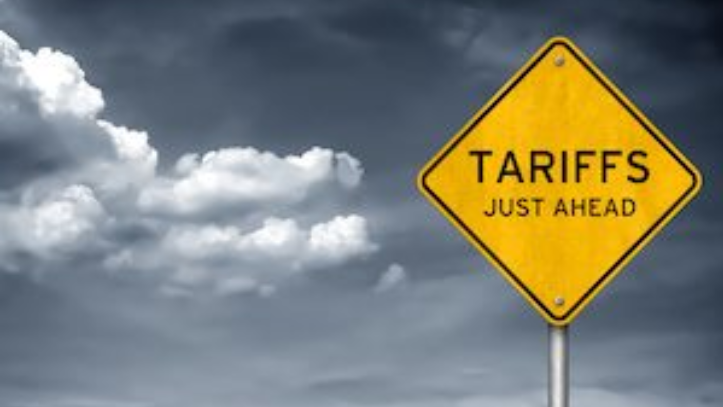Trade distortion and protectionism
Understanding US tariff actions: What do they mean for the global trade system?
Published 30 May 2018 | 4 minute read
The US Administration has announced yet another investigation which could result in tariffs – this time on automobiles.
Given the recent flurry of trade actions, it would be understandable if they all started to blend together in the mind of observers. That would be unfortunate. It is important to understand that there are distinct types of tariffs, implemented for entirely different reasons, under specific statutory authorities under US law – each holding vastly different implications for the global trade system.
Section 232
The prospective automotive tariffs – along with the already implemented steel and aluminum tariffs – were based on national security considerations, pursuant to section 232 of the Trade Expansion Act of 1962. These provisions provide the President with remarkably broad authority to impose trade restrictions when it is determined that imports are posing a threat to the national security of the United States. This law was enacted at the height of the Cold War and has been little-used since then.
The key point on these section 232 tariffs is their potential to open a veritable Pandora’s Box, unleashing far-reaching consequences across the trade system. Since national security considerations can be defined in extremely wide terms, the US action could provide a “green light” for other countries to take similarly broad actions under the pretext of national security. So for instance, if the US can impose steel and aluminum (or potentially automotive) tariffs based on national security considerations, would other countries be justified in blocking food and agricultural imports on the same grounds? What about telecommunications equipment? The list of products that could be blocked by any country under the pretext of national security is almost limitless.
While some might intuitively expect that such conduct would be an egregious violation of international trade rules, the WTO in fact contains a national security exemption (under GATT Article XXI) which basically permits members to take actions they deem necessary for national security. While the language is somewhat vague, and its precise parameters have not yet been tested, it is entirely conceivable that the US action could withstand any possible challenges launched in the WTO.
Section 201
The US tariffs on washing machines and solar cells in January 2018 – the first shot fired in the current trade contretemps – are an entirely different proposition. These are so-called safeguard tariffs initiated under section 201 of the Trade Act of 1974. These provisions essentially allow the President to apply trade restrictions when imports are causing (or threatening to cause) serious injury to US business. There are three important points to keep in mind about safeguard tariffs:
1) They do not require a determination that unfair trade practices exist.
2) They are generally imposed for a fixed period of time. In other words, they are not intended to create a permanent protective wall, rather they are intended to give US industry a “breather” in which (ideally) it can build greater competitiveness.
3) When properly implemented, safeguard tariffs are entirely consistent with the rules of international trade. The WTO explicitly permits safeguard tariffs under GATT Article XIX.
The safeguard tariffs therefore pose little or no threat to the integrity and functioning of the multilateral trade system – and in fact, might arguably demonstrate that the system is working.
Section 301
Perhaps the highest-profile trade action has been the announced tariffs on China stemming from US complaints about a variety of Chinese intellectual property practices. There has been mixed messaging from the Administration on the exact status of the implementation of these tariffs, but at least for the moment, they have not yet been put into place.
These tariffs are not safeguard tariffs, nor were they initiated on the basis of national security considerations. Rather, they were initiated under Section 301 of the Trade Act of 1974, which empowers the President to take trade actions against foreign trade practices which violate trade agreements or are otherwise unreasonable or discriminatory. This so-called “301 authority” was actually a fairly common trade policy tool in the years prior to the establishment of the WTO in 1995. With the establishment of the WTO, along with its binding dispute settlement mechanism, the use of 301 authority was largely shelved in favor of multilateral approach to the resolution of trade disputes and violations under WTO provisions.
The use of section 301 in the China IPR case therefore flies directly in the face of one of the defining philosophical pillars of the WTO: countries will eschew unilateral trade actions and opt instead for the institutionalized multilateral remedies offered by the WTO. Will the US’ use of its unilateral 301 authority begin to weaken the global “buy-in” to multilateral dispute resolution? That’s the danger, although it remains to be seen if it will materialize.
The other side of the coin
While at least some of the recent US trade actions hold serious implications for the global trade system, it’s important to keep in mind that there is another side to the coin. Many of these actions were prompted by damaging – and in some cases predatory – trade policies pursued by trade partners. The safeguard tariffs on washing machines, for instance, were necessitated due to widespread dumping (especially from Korea) of washing machines and the subsequent evasion of targeted anti-dumping tariffs. The steel tariffs were applied as a result of a global glut in steel spawned by massive increases in government-subsidized Chinese production. And the IPR tariffs were the result of a multitude of non-market policies employed by the Chinese government to bolster national high technology prowess. None of these policies or practices is consistent with the principles of free and open trade. To be fair, the case for the automotive tariffs appears less compelling, but the investigation has yet to begin in earnest, no determinations have been made, and no tariffs have been applied.
The imposition of tariffs is always a reason for concern, and that is certainly the case with the recent US actions. But proponents of free and open trade need to be equally concerned about addressing the other side of the coin as well: the unfair trade practices which frequently spawned them in the first place.
© The Hinrich Foundation. See our website Terms and conditions for our copyright and reprint policy. All statements of fact and the views, conclusions and recommendations expressed in this publication are the sole responsibility of the author(s).




